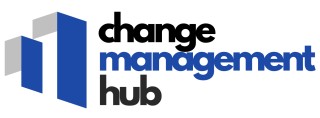-large-teaser.webp)
Understanding the Dynamics of Change Management
Grasping the Essence of Change Dynamics
Understanding change management is like mastering a complex puzzle, where each piece represents a crucial element affecting organizational dynamics. Change can be daunting, yet, when managed well, it becomes a powerful catalyst for growth and improvement. At its core, change management is about navigating shifts in processes, tasks, and goals to improve work performance while ensuring employees feel supported and engaged.
Effective communication and feedback mechanisms are vital to this process, helping to ease the transition for employees. Encouraging team members to voice their concerns and provide input facilitates a culture of openness, ultimately paving the way for successful change implementation. This engagement not only boosts productivity but also enhances employee performance by making them feel valued and heard.
Moreover, effective time management and prioritizing actionable tips can dramatically alleviate the pressure changes might bring. Allocating time to train employees in new skills and reinforcing soft skills will help improve overall work performance. The ability to adapt and evolve becomes easier when employees are equipped with the right tools and training, leading to profound improvements in job satisfaction and mental health.
Ultimately, a well-managed change emphasizes the significance of team cohesion. Creating a supportive environment where team members work toward shared goals not only improves performance work but also builds a more resilient organization. By focusing on active employee engagement and fostering communication, management can guide their teams through changes seamlessly. This holistic approach is crucial for any organization seeking to enhance workplace efficiency effectively.
Identifying Barriers to Effective Change
Recognizing Common Obstacles
Implementing change in a work environment can be met with resistance. However, acknowledging these barriers is the first step in overcoming them, paving the way for enhanced work performance. One of the primary challenges is fear of the unknown, which can lead to anxiety among employees. As uncertainty looms, it's crucial to maintain open channels of communication to provide clarity and ease apprehensions. Workplace culture can also impede change. An environment that resists adaptation stifles growth and employee engagement. Therefore, leadership must work towards cultivating a culture that supports continuous improvement and is receptive to new methods and ideas. Employee reluctance due to perceived increased workload or complexity of new tasks is another concern. Task management and effective time management strategies can be utilized to demonstrate that change will not inherently lead to more hard laborious tasks, but rather effective strategies for crafting more streamlined workflows. It's vital to assure team members that change will help simplify processes, not complicate them. Lack of adequate skills or training to navigate new systems can also hinder progress. Investing in necessary skill development and training sessions is one of the top ways to ensure employees feel confident in their abilities to embrace change. This focus on improving employee skills can lead to notable enhancements in employee performance. Feedback mechanisms provide valuable insight into the effectiveness of implemented changes and offer employees a voice in the process. This can significantly improve employee engagement and productivity. Encouraging regular feedback will help tailor strategies that meet the performance goals of both the organization and its team. Addressing these barriers by understanding and providing actionable tips on change management will lay a solid foundation for successful implementation. Improving communication and promoting a supportive team environment are key steps towards achieving great work performance as employees adapt to new expectations and responsibilities.Strategies for Successful Change Implementation
Crafting and Implementing Change Initiatives
Transitioning through a change management process demands not only strategic planning but also focused execution. Organizations seeking to improve work performance must place a strong emphasis on crafting well-defined and actionable change initiatives. Here are some pivotal strategies that top-performing businesses employ:- Clear Communication: Maintaining open lines of communication is fundamental in ensuring all team members understand the goals and expectations. Organizations that communicate effectively find that their employees feel more engaged and aligned with the company's vision. This clarity will improve performance and harmony among team members.
- Comprehensive Training Programs: Equipping employees with the necessary skills and knowledge is crucial. Implementing training programs that focus on both technical skills and soft skills such as time management can greatly enhance employee performance. When employees are well trained, they provide good work and help foster a productive work environment.
- Setting Clear Goals: Clearly defined goals and tasks ensure everyone is on the same page. When employees know what is expected of them, it’s easier for them to focus on the job at hand, which will help improve productivity and performance work.
- Feedback and Continuous Monitoring: Regular feedback is essential for improvement. By providing constructive feedback, organizations can help employees improve work performance and address any areas that may need further development.
- Fostering Team Collaboration: Encouraging teamwork and collaboration helps improve employee performance by allowing employees to learn from each other. This creates a positive work atmosphere where employees feel valued and motivated to achieve great work.
The Role of Technology in Enhancing Work Performance
Technology as a Driver for Enhanced Work Performance
In today’s rapidly evolving work environment, technology stands as a key player in boosting productivity and improving employee performance. By leveraging the right technological tools, organizations can enhance the workflow and streamline tasks, thereby optimizing work performance.
One of the top ways technology contributes to better work performance is through effective communication platforms. These tools help team members stay connected and informed, facilitating smoother collaboration across tasks. Additionally, team management software supports time management by organizing schedules, tracking progress, and setting clear milestones and goals.
Another aspect to consider is the implementation of feedback systems which empower employees to receive timely responses on their work. Such systems will help employees feel more engaged and motivated, knowing they have support and opportunities for improvement. This approach can significantly improve employee engagement and overall performance.
Moreover, investing in technology that promotes skills training and development can greatly benefit employee performance. E-learning platforms and virtual training modules offer actionable tips and introduce new skills without disrupting daily job responsibilities, thus saving time and improving efficiency.
Incorporating technology to manage and reduce tasks can also alleviate mental health stressors. Tools that automate routine and repetitive tasks allow employees to focus on more critical, strategy-driven work, leading to better job satisfaction and great work outcomes.
In conclusion, the integration of technology in change management strategies is pivotal to enhancing work performance. By focusing on communication, feedback, skills development, and task management through technological means, organizations are better poised to meet their productivity goals. This will ultimately foster a proactive work environment where continuous improvement is the norm.
Measuring the Impact of Change on Work Performance
Evaluating the Outcomes of Change
Measuring the impact of organisational change is crucial to ensure that workplace efficiency initiatives are successful. It's essential to adopt a structured approach to evaluate how changes affect work performance and to improve further strategies. Here’s a look at some practical ways to assess these impacts effectively.
Firstly, setting clear, measurable goals before implementing changes can provide a baseline against which progress can be monitored. Quantitative data such as productivity metrics, deadlines met, and attendance rates are often useful indicators. Regular performance evaluations help in comparing employee performance before and after changes. To gain a nuanced understanding, qualitative feedback through employee surveys can offer insights into how team members feel about the changes.
Time management is another critical metric in assessing improvement. Efficient time allocation can signify whether the adopted strategies are helping employees handle their tasks better. Tracking task completion times can offer valuable feedback on whether work performance has improved. Additionally, enhanced employee engagement can be a positive outcome of successful change, leading to better team collaboration and communication.
The role of technology, discussed earlier, also provides tools to aid in measuring change impacts. Performance management systems and analytics platforms can track various performance indicators, offering real-time feedback on how changes affect daily operations.
Moreover, fostering soft skills through continuous training and professional development programs can lead to better employee experiences, which indirectly boosts performance. Consider using these programs to develop employees’ adaptability, a critical skill in times of change. Engaging them actively in the change process promotes a culture of continuous improvement, ultimately enhancing overall work productivity.
By focusing on both tangible achievements and the qualitative satisfaction of employees, you can comprehensively measure the impact of change. This comprehensive evaluation will help in refining strategies and ensuring that your team is positioned for great work in the future.
Fostering a Culture of Continuous Improvement
Embedding Continuous Growth in the Workplace
Cultivating a culture of continuous improvement is crucial for enhancing employee performance and overall productivity. It requires commitment from both management and employees to drive consistent progress and meet evolving demands.- Encourage Open Communication: One of the most effective ways to foster continuous improvement is by promoting open communication within the team. Encourage employees to share feedback and suggestions that can help identify areas for improvement and innovation.
- Set Clear Objectives: Define specific goals that align with the organization’s vision. This will help in outlining actionable tasks and measuring progress, which, in turn, will improve work performance and maintain focus among team members.
- Invest in Training and Development: Providing opportunities for employees to enhance their skills is vital. Whether it’s through formal training or on-the-job learning, such efforts improve employee engagement and equip the team with the competencies needed to excel.
- Promote Collaborative Efforts: Encourage team members to work together on tasks and projects. Collaboration enhances creativity, ensures diverse perspectives, and helps solve complex problems more effectively.
- Implement Feedback Loops: Regular feedback sessions allow employees to understand performance expectations and receive recognition for good work. Constructive feedback is essential for improving work and making necessary adjustments.
- Prioritize Well-Being: Ensure mental health and time management are addressed. Providing resources and support for stress management can help employees feel more balanced and productive, leading to great work performance.
- Embrace Technology: Utilize technology to streamline tasks and improve efficiency. Tools that aid in time management and task automation can significantly enhance productivity.













